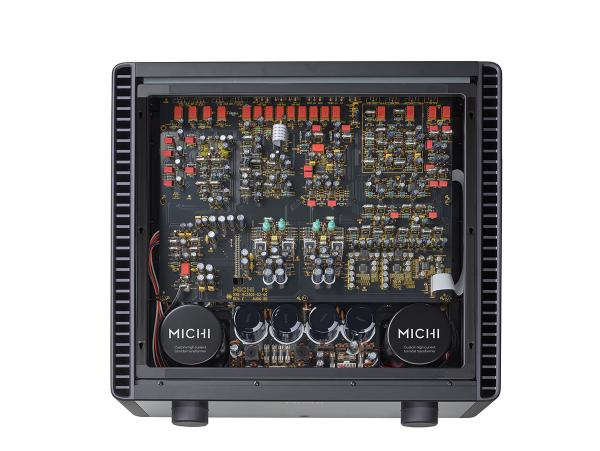Rotel Michi P5 S2 page 2

Measy Action
Not only is it very easy to ‘get going’ with the P5 S2, this new Michi preamp is also very easy to listen to. Using its DAC stage, via the most accommodating USB-B input (a simple process via a Mac, but Windows users will need to install the driver supplied on a USB stick in the box), it has a moreish, involving sound, with a gentle warmth to its lower midrange and bass but little in the way of obvious softening up top. The P5 S2 can bring your attention to detail without overdoing it, and this applies to its soundstaging, too. Furthermore, its extensive array of inputs offers plenty of scope for sound seasoning.
Hans Theessink and Terry Evans get into their Delta Blues groove on ‘Got To Keep Moving’ [Visions; Blue Groove, 44.1kHz/ 16-bit], despite one half of this pairing being born in the Netherlands. Through the Michi preamp, there was a righteousness about the way the production was writ large, the twin guitars and vocals sounding big and in the room, yet still precise. The bend of a string here, or a scraped pick there, were as apparent as the timbral differences between the two singers.
Lucid Dream
Anthrax’s ‘Only’ is a much less airy affair, its tremolo guitar riffs coming close to the wall of noise the album name suggests, while drums and bass guitar rumble away underneath with plenty of vigour. Yet the P5 S2 made it an exciting listen, steering clear of brashness while still finding the aggression in the instrumentation. The layered vocals in the chorus were neatly unpicked, letting you appreciate every member of the band belting out the song title with varying degrees of tunefulness.
The refined, nuanced sound of Rotel’s premium preamp really showed what it could do with the jazzy instrumentals of The Roy Hargrove Quintet’s Earfood set, played from CD through Hegel’s Viking player. The opening track, a cover of pianist Cedar Walton’s ‘I’m Not So Sure’, had a clear focus on the staccato piano playing dead centre, with brass players flanked left and right. There was a lucid, fluid soundstage, and a fine – but not extravagant – sense of depth.























































